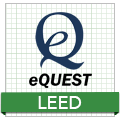eQUEST 310 - 90.1 Compliance for LEED or 179D
Monthly
$179
/mo
More Details
recurring
(cancel anytime)
Lifetime
$479
/Forever!
Forever Access
Yup, forever!
This course breaks down an eQUEST model and goes step by step through the LEED energy modeling process (LEED NC 2009). We'll model a building step by step and talk about how to do things the 'LEED' way and how to reduce those pesky review comments. The case study starts with design documents and ends with eQUEST reports to submit to LEED.
What do you get with purchase?
- Downloadable LEED libraries for walls, windows, and doors & more
- 8 hours of HD Course Video
- Course Building Files
- eQUEST + LEED training course, final exam
- Certificate of completion (Highest scores get listed in database per your permission)
- Invite to eQUEST Certified User Group on Linkedin
- 7 pdh's (professional development hours)
Part 1:
Setting Up the Building in eQUEST and Preparing the Energy Model
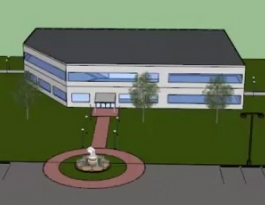
From Opening eQUEST to LEED Submission
This course breaks down an eQUEST LEED model and goes step by step through the LEED energy modeling process. We'll model a building step by step and talk about how to do things the 'LEED' way and how to reduce those dreaded review comments. Starts with design documents and end with eQUEST reports to submit to LEED.
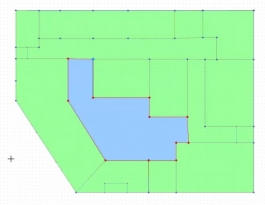
Implement Building from Design Drawings
We provide you everything to follow along step by step including: the building design, mechanicals, architecturals and .dwg building cad file. The ability to not only watch the process, but actually do the energy model yourself in eQUEST make this course an amazing learning tool. Follow along as we import the cad file into eQUEST, set up the building shell/draw the building and set up the energy model's zones. Then, we complete the baseline building (the specific example is per 90.1-2007 System 5)
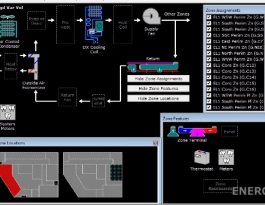
eQUEST System Setup
Since we provide all the mechanical specs it's easy to follow along while we use the eQUEST navigator and component tree view to setup the systems. Watch as we go through a VAV, unit heater and heat pump systems and set up the equipment, then assign the zones.
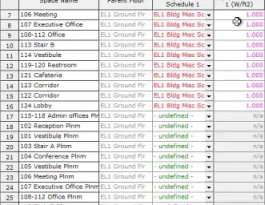
Rate Structures, Detailed Mode, and LPD
We go through the rate structure set up and then move out of the design development wizard into eQUEST Detailed Mode. We discuss renaming eQUEST spaces using the eQUEST .inp file and our eQUEST space renamer. Next we show you how to create global parameters in eQUEST, using LPD (Lighting Power Densities) as an example and much more.
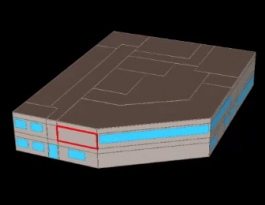
eQUEST Window Setup and Materials
We go over how to finish up the building details, such as windows, doors, walls and glass types. Then we go through material and construction types set up in the detailed mode. We basically finish setting up the energy model in this section.

eQUEST System Specifics
We finish off the energy model by setting the system specifics in this section. In this section we wrap up some fan details and pump details. Then we make sure our efficiencies are correct.
Part 2:
Using eQUEST to Create the LEED Energy Model
Create the baseline building for LEED in eQUEST
Fix Unmet hours
Learn reports to submit to LEED
Fix Unmet hours
Create the baseline building for LEED in eQUEST
Create Proposed building for LEED in eQUEST
Time estimation for eQUEST LEED projects
How to price eQUEST LEED models
Finish with a Complete LEED Model
I want to thank you for the leed and equest course you gave on friday. Really useful. Of course there will be always more questions regarding Leed, eQUEST and ASHRAE and so on. But the course was really helpfull and full of quality information that will help me in my day to day modeling.
-- Santiago
I just wanted to say I really enjoyed the webinar; it was very informative. The videos and cheat sheets are incredibly useful.
-- Eric
